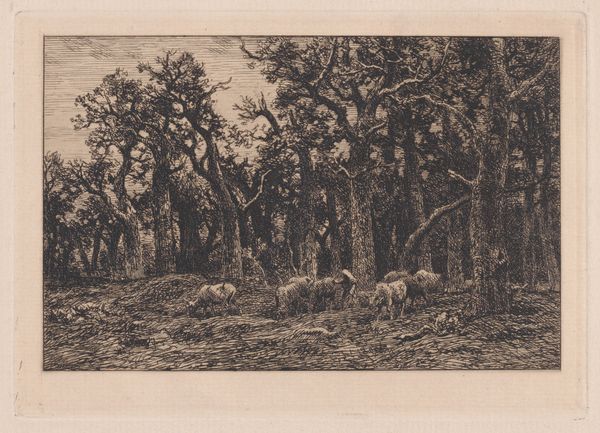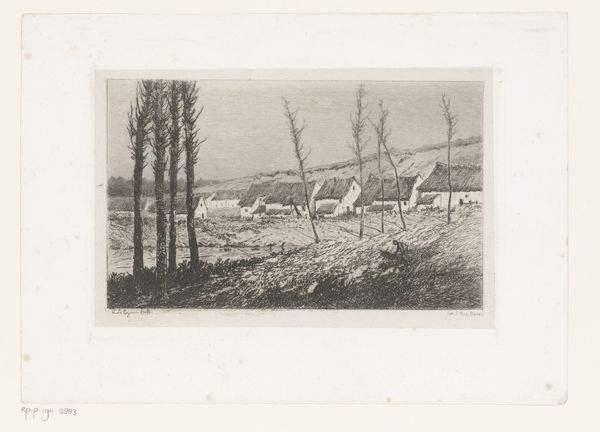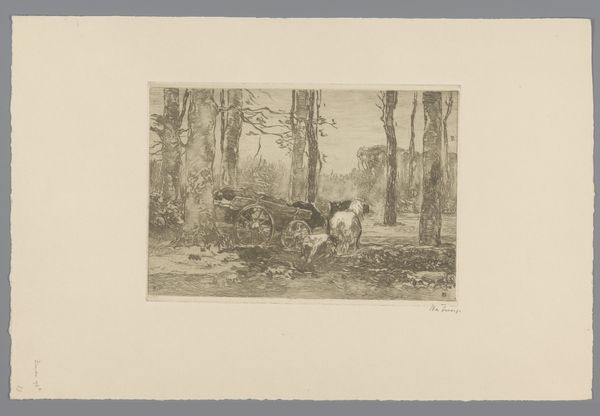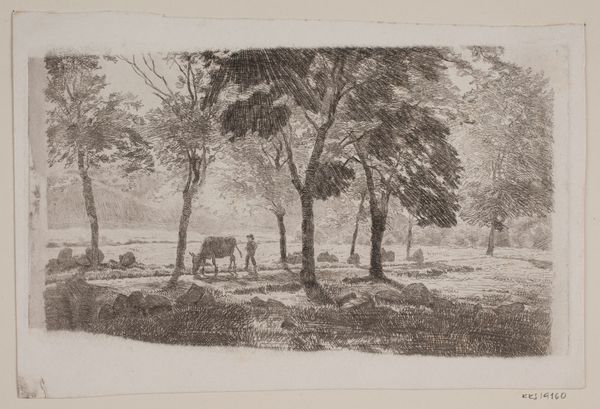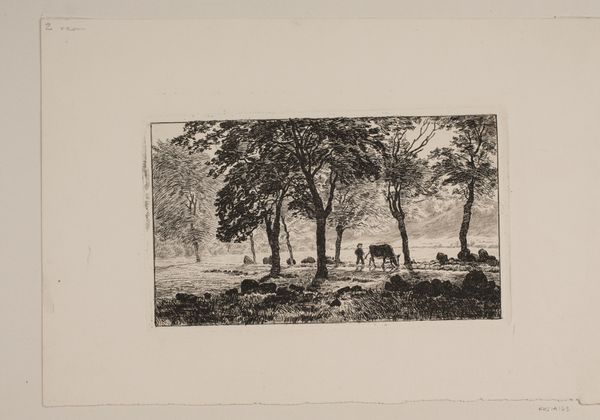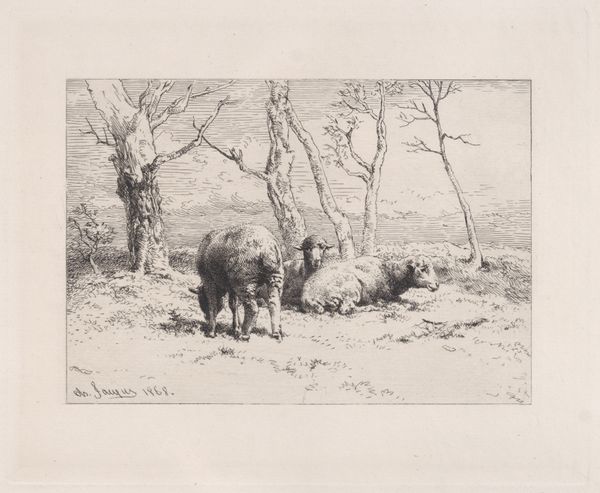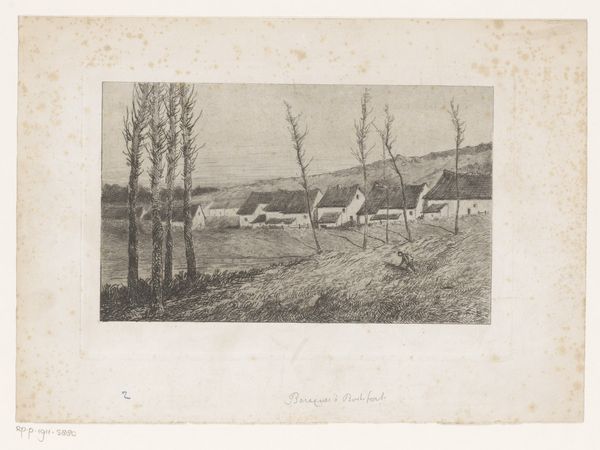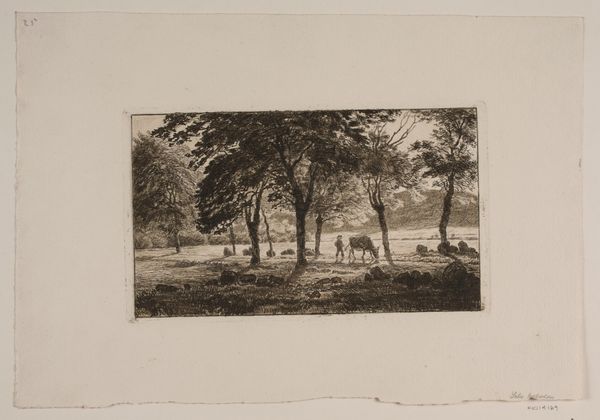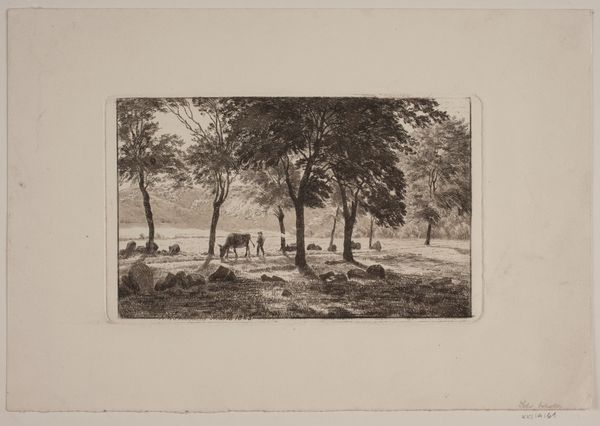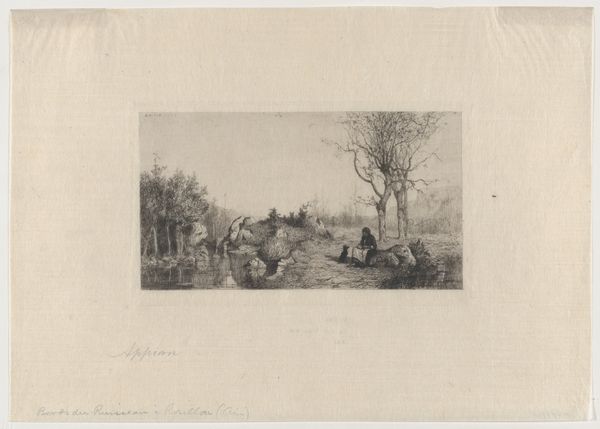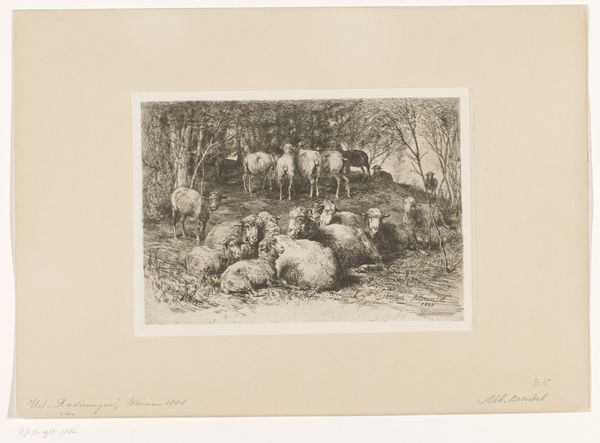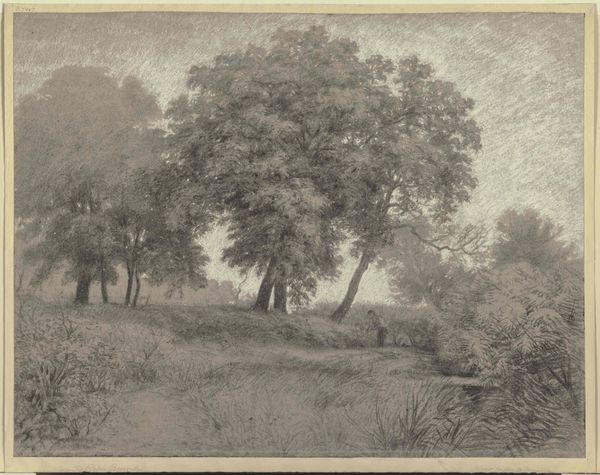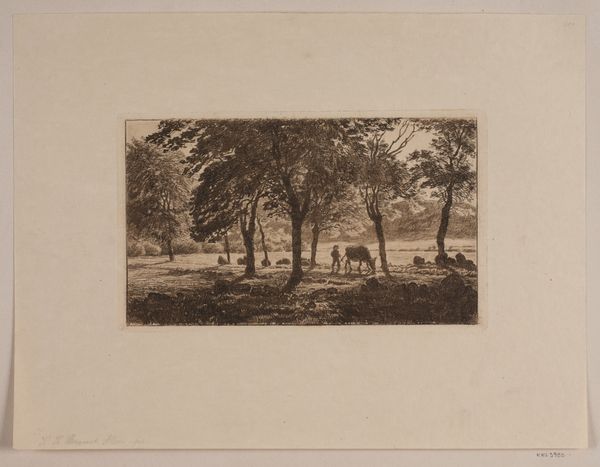
drawing, pencil
#
pencil drawn
#
drawing
#
pencil sketch
#
landscape
#
pencil
#
realism
Dimensions: height 162 mm, width 236 mm
Copyright: Rijks Museum: Open Domain
Curator: This pencil drawing is titled "Schaapskudde en herder in een weide met bomen", which translates to "Flock of sheep and shepherd in a meadow with trees." The piece, crafted by Philip Zilcken, dates from around 1890 to 1930, and is held here at the Rijksmuseum. Editor: My initial response is tranquility. It evokes a gentle stillness with the sheep grazing, and the shepherd observing his flock. The subdued tones of the pencil add to the overall softness. Curator: It's interesting to consider this landscape drawing through a lens of social commentary. The rural subject matter speaks to the idealization of agrarian life, a narrative heavily romanticized during this period of rapid industrialization. There are political implications there too: often paintings depicting rural folk idealized traditional power structures, land ownership, and conservative values. Editor: I notice the layering of motifs. The sheep as symbols are multivalent. Are we meant to see the sheep as docile followers of the shepherd, echoing societal expectations of conformity? Or perhaps as symbols of innocence and pastoral purity? It brings to mind Christian iconography and the use of animal symbolism. Curator: That religious undertone is present, for sure, but let's not overlook the societal structure being subtly depicted. This piece could serve as a window into the unequal relationship between the powerful landowner (implied through the herder) and the dependent laborers, especially at a time when there was upheaval and concern around that dynamic. Editor: It’s compelling to analyze the interplay of dark and light in relation to these power structures. The shadows in the woods beyond create a kind of visual ambiguity. Perhaps that’s a hint of uncertainty on Zilcken's part, regarding the future of this seemingly idyllic rural existence. Curator: Absolutely. And perhaps it’s Zilcken, perhaps it’s society as a whole not facing the difficult questions about what modernization means for labor. What should be prioritized over what, and at what cost? Editor: It definitely shows that even ostensibly "simple" landscapes often carry a powerful charge when decoded using symbolism. It offers a glimpse into what past viewers might have read from them. Curator: Analyzing art through multiple contexts allows us a wider, intersectional awareness. We can trace not just the artist's intention, but the complex webs of social meaning embedded in seemingly serene artworks like this one.
Comments
No comments
Be the first to comment and join the conversation on the ultimate creative platform.
